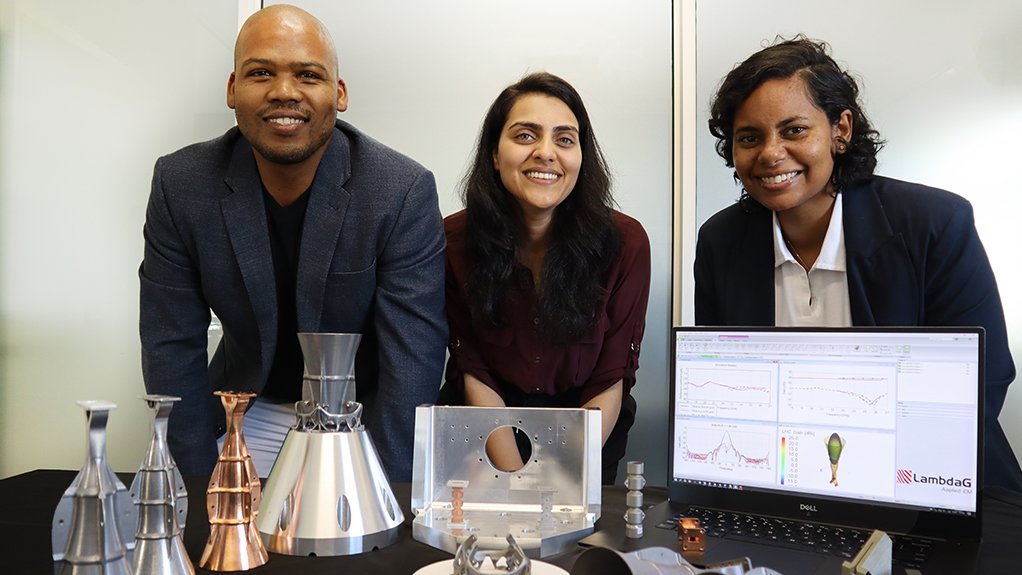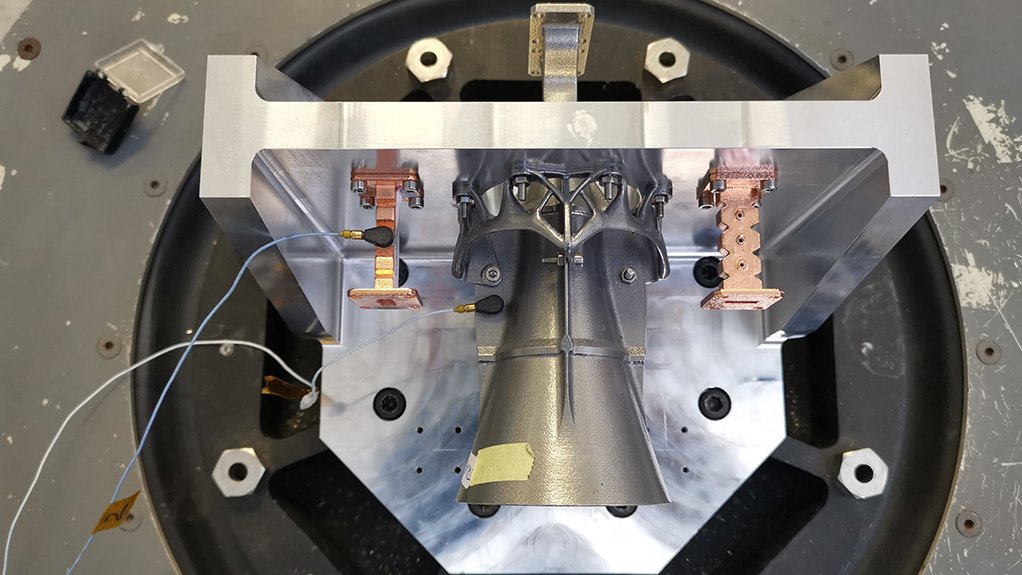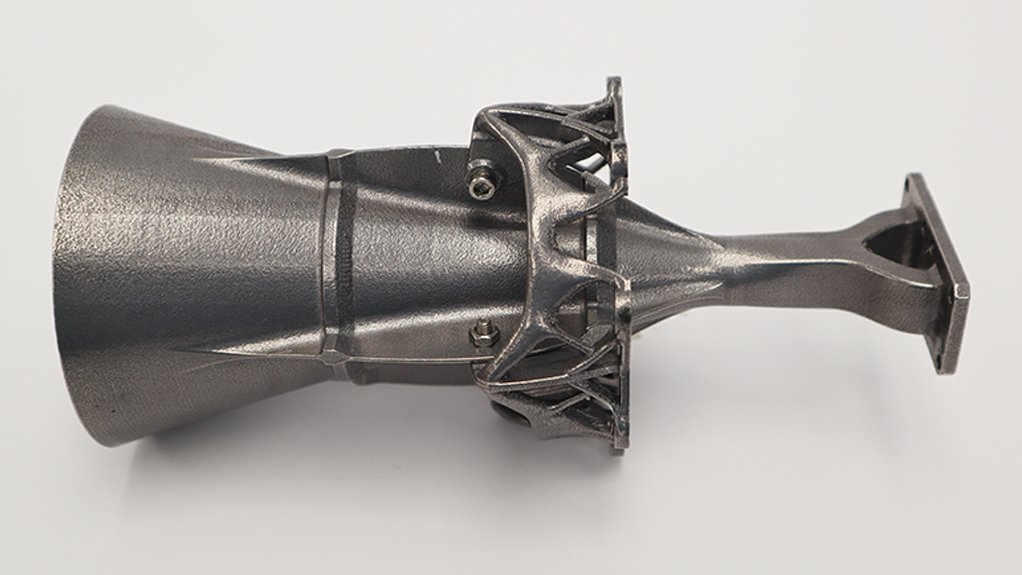Project increases company competitiveness




PROJECT TEAM Dr Vernon Davids (CEO), Ms Riddhi Maharaj (Project Manager), Dr Melissa Boonzaaier-Davids (Project Coordinator)
ANTENNA ASSEMLY The also concluded with a letter of intent from a US satellite supplier for a demonstration of this technology and antenna assembly for future missions
LIGHTWEIGHT K-BAND The project proves that lightweight, high-performance radio-frequency components can be locally manufactured for spaceflight at low cost using additive manufacturing
A supplier development project conducted by local body the Aerospace Industry Support Initiative (AISI) has increased the global competitiveness of advanced radio- frequency and microwave components manufacturer LambdaG, placing the company on a path to compete with “European manufacturers”.
“Although the technology can be used for South African or African space missions, the product is envisaged to primarily be an exported product for the global space market, available through our industry partner, NewSpace Systems (NSS), a manufacturer of guidance, navigation and control products for spacecraft,” adds LambdaG CEO Dr Vernon Davids.
LambdaG was founded in 2018 as a black-owned small, medium-sized and microenterprise, and has since been incubated by NSS.
This development project consisted of three phases, with individual deliverables for every phase, and an overall objective for the project. The phases spanned a three-year period, with the first phase starting in November 2018 and the last phase completed in August this year.
The project was supported by the AISI through the provision of funds for the development and manufacturing that was required for the project, consequently enabling LambdaG to access technical resources and the infrastructure required to undertake the project.
The AISI also provided technology management support through technology roadmapping exercises that were undertaken before and during the execution of the project. This support was made possible owing to the funding the AISI receives from the Department of Trade, Industry and Competition.
This project has assisted LambdaG in improving its manufacturing capabilities in the development of antenna and radio-frequency components for the aerospace and defence industries.
The company gains access to a rapidly growing small-satellite market through the project, as well as to office space, reduced overheads, technical support and mentorship, highly specialised test equipment and cleanroom assembly facilities, owing to LambdaG being incubated at the NSS premises, in Cape Town.
As part of the technology transfer conducted between LambdaG and NSS, a female engineer was appointed as project manager by NSS for exploring the additive manufacturing and plating processes of passive radio-frequency components.
NSS has proven the technology up to K-band (12 GHz to 18 GHz) frequencies for simple filters, resonators and waveguide sections.
These gains were implemented in the strategy and technology roadmap towards the research and development of waveguide subassemblies up to K-band (18 GHz to 26 GHz) and Ka-band (26 GHz to 40 GHz).
The project manager was retained, as well as the partnerships with local suppliers.
Further, the project also helps to establish a local supplier, in addition to meeting a mutual goal of the partners and collaborators of maturing the additive manufacturing and surface finishing of radio-frequency components.
“Having control over specific parameters in the manufacturing process allows for optimising the process for our specific system requirements, which can be different from requirements in other industries,” emphasises Davids.
Other benefits include job creation, being able to export high-value parts for spacecraft, and shorter lead times.
The project also proves that lightweight, high-performance radio-frequency components can be locally manufactured for spaceflight, at low cost, using additive manufacturing.
Davids explains that a desirable feature of modern satellites, specifically telecommunicate satellites, is shared aperture and reflector-based antenna systems that accommodate different frequency bands.
Having different antennas for each operating frequency band, or a multiband assembly, increases the antenna pointing or mounting structure requirements, he adds.
“The communication system of a spacecraft is a critical system, since it enables the operation of the spacecraft and its mission. For satellite systems, weight translates directly into an increased launch cost, and for this reason, assemblies with reduced weight with high performance are favoured.”
Davids says the manufactured parts have been showcased at several international expos and trade shows, which has led to technical discussions with interested clients and partners.
Three-dimensional printed parts were presented with several newly developed NSS components at the Small Satellites Systems and Services Symposium conference, held in Portugal in May this year. The same parts were also showcased at the Small Satellite Conference in Utah, in the US, last month.
The results of the development project were also presented in the form of a scientific paper at a conference earlier this month.
Following the European Cooperation for Space Standardisation guidelines, LambdaG has partially qualified the hardware for the space environment.
“The development project also concluded with a letter of intent from a respected US satellite supplier for a demonstration of our technology and antenna assembly for future missions. This will give the technology and product ‘space heritage’ – a requirement to be successfully adopted by other satellite integrators,” Davids concludes.
Comments
Press Office
Announcements
What's On
Subscribe to improve your user experience...
Option 1 (equivalent of R125 a month):
Receive a weekly copy of Creamer Media's Engineering News & Mining Weekly magazine
(print copy for those in South Africa and e-magazine for those outside of South Africa)
Receive daily email newsletters
Access to full search results
Access archive of magazine back copies
Access to Projects in Progress
Access to ONE Research Report of your choice in PDF format
Option 2 (equivalent of R375 a month):
All benefits from Option 1
PLUS
Access to Creamer Media's Research Channel Africa for ALL Research Reports, in PDF format, on various industrial and mining sectors
including Electricity; Water; Energy Transition; Hydrogen; Roads, Rail and Ports; Coal; Gold; Platinum; Battery Metals; etc.
Already a subscriber?
Forgotten your password?
Receive weekly copy of Creamer Media's Engineering News & Mining Weekly magazine (print copy for those in South Africa and e-magazine for those outside of South Africa)
➕
Recieve daily email newsletters
➕
Access to full search results
➕
Access archive of magazine back copies
➕
Access to Projects in Progress
➕
Access to ONE Research Report of your choice in PDF format
RESEARCH CHANNEL AFRICA
R4500 (equivalent of R375 a month)
SUBSCRIBEAll benefits from Option 1
➕
Access to Creamer Media's Research Channel Africa for ALL Research Reports on various industrial and mining sectors, in PDF format, including on:
Electricity
➕
Water
➕
Energy Transition
➕
Hydrogen
➕
Roads, Rail and Ports
➕
Coal
➕
Gold
➕
Platinum
➕
Battery Metals
➕
etc.
Receive all benefits from Option 1 or Option 2 delivered to numerous people at your company
➕
Multiple User names and Passwords for simultaneous log-ins
➕
Intranet integration access to all in your organisation





















